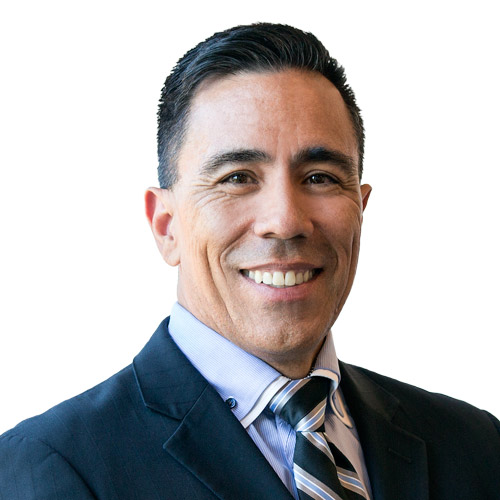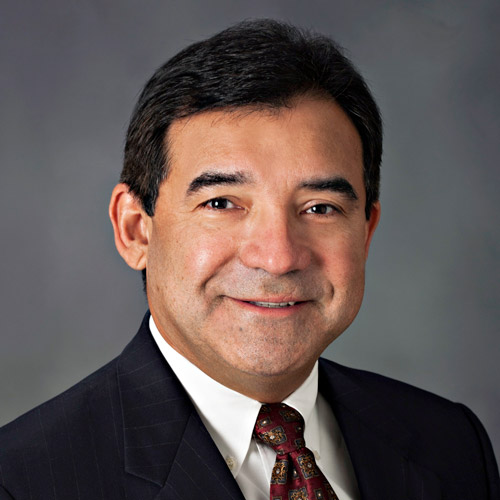
At what point do you realize you’ve found your niche? For Jesús Román, that point was upon returning to Puerto Rico, where he was born and raised, to work for telecommunications giant Verizon. His niche? Telecommunications law.
Román is the assistant general counsel for Verizon, the company he has been with for nearly fifteen years. His role with the company has changed significantly during the course of his tenure, thanks in large part to the seismic shift going on in the industry. He has witnessed the company expand from a communications company to a broadband company, to an entertainment company.
He is well aware that adaptability is the only way to remain competitive, and Verizon has demonstrated its ability to adapt in spades. “Technology moves fast, and so do we,” he says.
Seeking Telecom
From a young age, Román knew he would pursue a career in law. His plan was to get an education stateside and return to Puerto Rico to practice.
After receiving his bachelor’s at UCLA, a master’s degree in public affairs from Princeton, and law degree at the University of California–Berkley, Román spent five years with Pillsbury Madison & Sutro before obtaining his license in Puerto Rico. He moved home to work at Adsuar Muñiz Goyco y Besosa for Francisco Besosa, who is now a US Federal District Court Judge for the District of Puerto Rico.
It was there that Román developed an acute interest in telecommunications law. He represented subsidiaries of Enron, educating the state’s Utilities Commission about the safety of installing state-of-the-art fiber optic wiring into decommissioned propane gas lines, and represented payphone operators and a wireless company before the Puerto Rico Telecommunications Regulatory Board. Román became the proclaimed “telecom guy,” and, more importantly, he became managing partner for the firm’s telecom practice.
In 2001, he moved to California, lured by Coblentz Patch Duffy & Bass, a firm with a specialization in telecom law. Román admits he didn’t get to spend as much time working with telecom issues as he had originally anticipated. But fortuitously, it would be a phone call during his time at the San Francisco firm that would give him the opportunity to handle telecom regulations at the next level.
Becoming Verizon
When Román received the call from Verizon, he knew that accepting the position would mean a complete shift in his line of work. He would not only be transitioning from a law firm to in-house but also changing from commercial litigation to full-time regulatory law. Although Román’s experience was in litigation, he was excited about the prospect of his work having a bigger influence on the industry.
“What I envisioned as I was making this change was having a bigger impact on society,” he says. “In telecommunications law, you’re able to influence policy that impacts society at a much greater level than litigation.”
When he started at Verizon, the majority of his time was dedicated to wireline issues for the California legal entity, but soon after, he started working on exciting cutting-edge wireless policy issues. Gone were the days of the Gordon Gekko brick phone. Mobile phones were becoming smarter and more accessible to people at all socioeconomic levels, not just the one percent.
Currently, Román assists in dealing with the legislatures and public utilities commissions in the eighteen states that make up the Pacific and North Central markets (from Hawaii and Alaska to Minnesota). His workload also varies depending on the time of year. From January to May—during most of his region’s legislative sessions—his energy is focused on reviewing active and pending legislation that include issues pertaining to broadband, Internet protocol, wireless siting, cybersecurity, telematics, public safety, privacy, and consumer protection rules, among many others.
“Our job is to rationalize legislation to business realities and remove unreasonable regulatory obstacles to the efficient delivery of our services and meeting the consumer’s needs,” he says.
This means working with state legislators and utilities commissions to avoid the imposition of wireline monopoly-era regulations on the hypercompetitive wireless market. “My goal is to create the path to quickly deploying the latest technology to make seamless connectivity possible, so that the services that ride that technology are available for every aspect of people’s lives.”
Verizon’s Digitization Strategy
When it comes to the telecom industry, Verizon is and has always been a dominant player. With offices located in 150 countries, it’s the largest mobile carrier with an estimated 108.6 million mobile connections. However, the company knew it couldn’t continue growing solely on its existing products and services, and decided to look into other ways to monetize its infrastructure.
Verizon didn’t hesitate to hop on the lucrative digital content bandwagon. “What I see in society right now is this shift to getting video anytime, anywhere as seamlessly as possible. Verizon wants to meet that consumer demand and a lot is going on to make that happen,” Román says.
In 2015, Verizon acquired AOL for $4.4 billion. With the mass media company in its control, Verizon could continue to clear a path for its LTE wireless video and streaming video strategy. Another effort to get its foot in the door in the media business was through the purchase of DreamWorks’s AwesomenessTV to supplement content for its OTT (over-the-top) video platform Go90. The popular app gives users access to live sports, TV clips, and other short-form content that meld the worlds of Netflix and YouTube together. The Runner, Relationship Status, Coach Snoop, and Street Fighter: Resurrection and Guidance are just a few of the popular series featured on the free app.
“We live in an app economy,” Román says. “A lot of people have powerful smartphones, and the point of owning one is largely to access these apps. We want to create the space for entrepreneurs to develop apps that people can use to make their lives better; better matters.”
Go90 is just the tip of the iceberg when it comes to Verizon’s digitization strategy. “Everything you see with [the Internet of Things], we [Verizon] are significantly tied to,” Román notes, and he’s correct. Verizon has entered into the realm of connected car technology and fleet telematics, offering businesses its Verizon Networkfleet Solutions, that includes asset tracking. Even in scrolling through Verizon’s website, one can see how the brand is positioning itself as a thought leader in connectivity, with reports and white papers on the state of the industry and even Facebook pages promoting tangential content.
Román has witnessed the vast expansion of Verizon, and many of the company’s milestones have also been personal wins for himself. “I’ve been so satisfied with working with so many of the smartest attorneys. I’ve learned a lot at Verizon,” he says.
He attributes his personal success to his many mentors, not just at Verizon but throughout his career. “I come from a low-income background and to be where I am right now is not just through personal effort, but because I’ve had a lot of people who have believed in me,” Román says.
State of the Market: Internet of Things (IoT)
Here’s what you need to know about the IoT in 2016
• According to Verizon, 2015 was the year the IoT gained legitimacy. Companies across all industries now have IoT squarely on their radar.
• IoT platforms are making the development of IoT applications easier, faster, and cheaper for everyone.
• A growing IoT market is enabling organizations from every industry to comply with regulations, increase process efficiency, gain better customer insight, and build completely new business models.
• The next step for IoT is predictive and prescriptive analytics.
• Convergence between different IoT solutions is addressing real-world problems and helping consumers in their day-to-day lives.
• 5G will provide the ecosystem to enable a fully mobile and connected world.
A Través de los Años
Jesús Román on Verizon’s milestones of the century so far
2004: Verizon Launches FiOS Fiber-Optic Network
“Bringing fiber to the premises was a significant departure from what any other company was doing and Verizon was leading the way.”
2010: 4G LTE Deploys
“Verizon launching 4G LTE was another example of the company leading the way. It was the nation’s first wide-area 4G LTE network.”
2015: Verizon Acquires AOL
“We are very much tied into the Internet of Things. And we have been expanding our portfolio and entering digital media space.”
2017: Projected 5G Deployment
“We led the 4G LTE revolution, and now we are leading the revolution toward 5G. Our competitors discussed a 2020 deployment, but Verizon will have some level of commercial deployment next year. Companies that were skeptical are now doing their own trials.”

